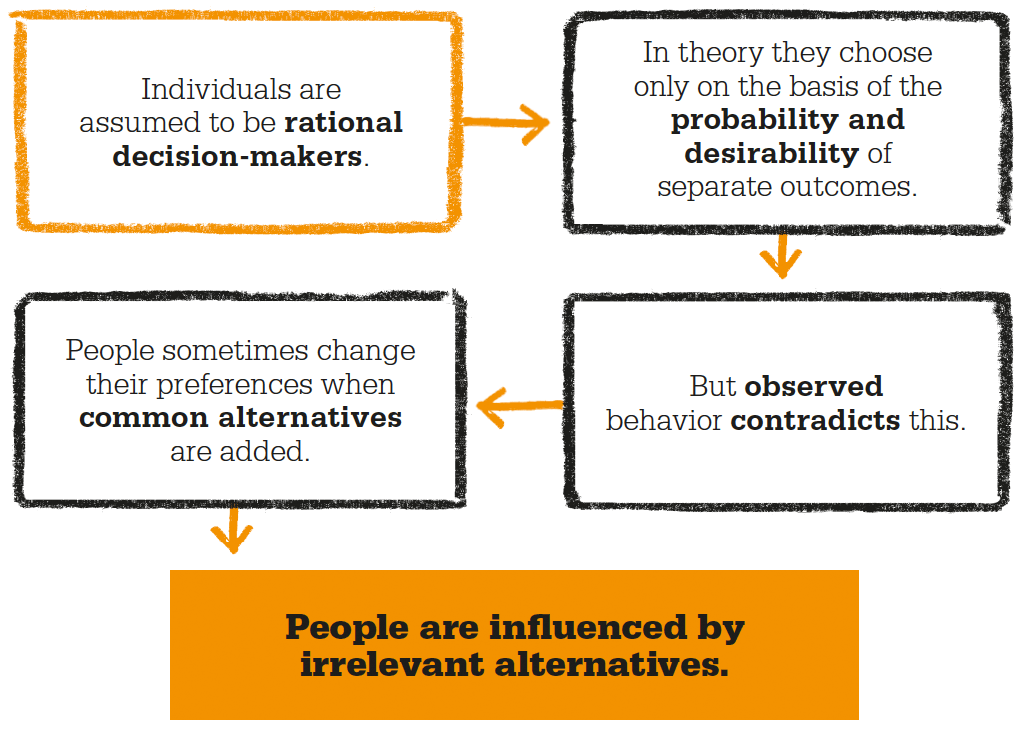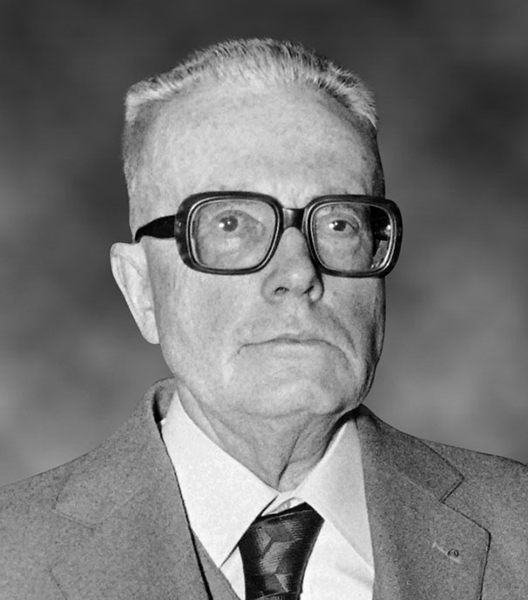

Decision making
Maurice Allais (1911–2010)
1944 John von Neumann and Oskar Morgenstern publish A Theory of Games and Co-operative Behavior, laying the foundations for expected utility theory.
1954 US mathematician L. J. Savage shows how people calculate the probabilities of uncertain events.
1979 Daniel Kahneman and Amos Tversky explain some discrepancies between psychological experiments and the claims of economic theory.
From 1980s Behavioral economics is established, integrating psychology with the mathematical techniques of economics.
In 1944, the US mathematician John von Neumann and the German-born economist Oskar Morgenstern developed expected utility theory to describe how people make decisions under conditions of uncertainty. “Utility” is a measure of satisfaction, and economists use units of utility to talk about the amount of satisfaction gained from various outcomes. The theory assumes that people are rational when faced with choices in which there are no guaranteed outcomes: they weigh the utility gained from each possible outcome by the probability that it will occur, then choose the option that promises the greatest utility. The model uses a mathematical approach to decision making, and has been used to analyze all sorts of economic behavior in situations of uncertainty.However, in 1953, French economist Maurice Allais challenged this theory from what he referred to as the American School of economics.

He pointed out that expected utility theory is based on an assumption, known as the independence axiom, that says people will dispassionately look at the likelihood of outcomes and the utility they will gain from each one. In particular, they will view each choice independently, ignoring any factors that are common to each option. Allais said that this was rarely, if ever, true. His contention became known as the Allais paradox.
"Whatever their attraction might be, none of the fundamental postulates forumulated by the American School can withstand analysis."
Maurice Allais
We cannot directly see people’s thought processes when they choose, but we can observe the choices they make and see if these are consistent with rationality and the independence axiom. Imagine that you are given a choice between an apple and an orange, and you choose the apple. Now imagine that you are offered the choice of an apple, an orange, and a peach. The independence axiom assumes that you might choose the apple again, or the peach, but you would not choose the orange—because the addition of the peach cannot change your preference for apples over oranges.
The violations of independence that Allais detected, however, take place in situations of uncertainty. Suppose you had a choice between two “lotteries,” each of which has several possible outcomes with particular probabilities. The first lottery gives you a 50 percent chance of an apple and a 50 percent chance of a peach. The second lottery gives you a 50 percent chance of an orange and a 50 percent chance of a peach. Because you prefer apples to oranges, you should choose the first lottery: under the independence axiom, the addition to each lottery of a peach—making the peach equally probable as an outcome in both choices—should make no difference to the choice of apple over orange. But in practice, very often it does.
In experiments using more complex forms of this kind of choice, people frequently violate the independence axiom. This conflicts with the standard economic idea that humans always act rationally. For some reason the presence of other choices in a set of options seems to matter to people—it makes a difference. The discovery of these kinds of behaviors has spawned the new field of behavioral economics, which attempts to devise more psychologically realistic models of decision making.

Maurice Allais was born in Paris, France, in 1911. His father died during World War I, and this affected Allais deeply. He excelled at school and studied mathematics at the elite École Polytechnique, graduating first in his class in 1933. He then served in the military before working first as an engineer, then as departmental manager for the École Nationale Supérieure des Mines. During this time he also published his first pieces on economics. In 1948, the École Nationale allowed him to focus entirely on teaching and writing, and he became their professor of economic analysis. A polymath, Allais also made contributions to physics. In 1978, he was the first economist to be awarded a gold medal by France’s National Centre of Scientific Research, and in 1988, he won the Nobel Prize for economics. He died in 2010.
1943 In Search of an Economic Discipline
1947 Economy and Interest
1953 The Behavior of Rational Man Confronting Risk